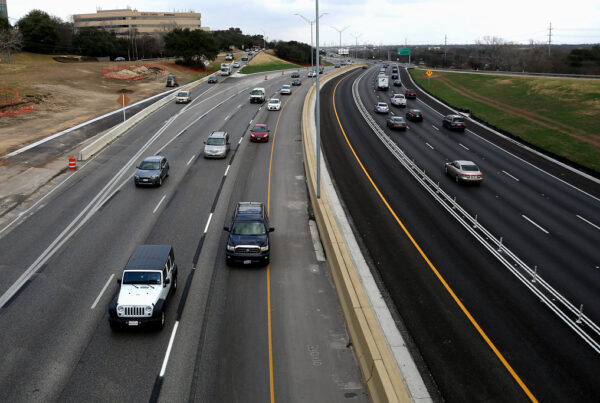Marijuana is okay in Oklahoma for medical purposes. And it’s popular: About 10% of the adult population participates in the state’s program.
But marijuana hasn’t been cleared for recreational use in Oklahoma. That remains the case after Tuesday, when voters in Oklahoma rejected a proposal to legalize recreational pot.
Sean Murphy, an Associated Press reporter based in Oklahoma City, joined the Texas Standard to share more about the outcome of the vote.
This transcript has been edited lightly for clarity:
Texas Standard: Was it a surprise that this vote on recreational pot in Oklahoma went the way it did?
Sean Murphy: I was definitely surprised. Of course, I’ve been covering Oklahoma politics for more than 20 years, so I should have learned by now not to be surprised because sometimes the electorate is just difficult to figure out. Just in 2018, voters overwhelmingly supported approving the medical program by almost 20 percentage points. And here it is four or five years later, and it’s been flipped: It’s more than 20 percentage points voted against full-scale legalization. I think there’s probably a number of reasons for that, and I think mostly it’s just that the medical program is so unrestricted and has such low barriers to entry that I think people have just been overwhelmed by how quickly the medical program has expanded.
One of the selling points behind this proposal was the role that Texans would play in supporting the Oklahoma economy. Can you say a little bit more about that?
Well, they did a fiscal impact study; now, it was done by the cannabis industry, and a lot of people think that the numbers might have been a little inflated, but it showed that out-of-state consumers would have been a huge part of the increase in sales. And of course, Texas being such a big state, I mean, the Dallas-Fort Worth Metroplex itself has almost twice as many people as our entire state, and they’re mostly, what, about an hour from the border. In their projections, Texans would have made up a huge portion of the out-of-state consumers that they were expecting had this passed.
And yet it didn’t. And I’m wondering how much of that has to do with the state’s existing medical marijuana program. I know that in some places – depending on the state, of course – medical marijuana and the proliferation of dispensaries, it’s almost like – well, you mentioned a low barrier to entry. And I’m thinking, well, maybe for both sellers and buyers, you know, you come in with a very small complaint, there’s a “diagnosis,” and you can walk out with marijuana. How does it work in Oklahoma?
So you just need a physician’s recommendation. There’s no list of qualifying conditions. So like in many states, it’s restricted to people who have certain types of cancer or, you know, very debilitating diseases; that’s not the case in Oklahoma. In fact, prescriptions can be obtained online without actually even seeing a doctor. You fill out a questionnaire indicating, you know, maybe you have anxiety or an old knee injury or something like that. You get a recommendation, and then you have a license for two years to purchase and consume marijuana edibles. You can grow plants in your home if you want. It’s very loosely restricted. Close to 10% of the population of Oklahoma actually possesses a license.
And it’s also very easy to get in on the grower side or the processor side. Now they have put in place a moratorium on issuing new grower licenses just so they can try to get their arms around just how this industry has exploded. There have been a lot of illegal grow operations, people that haven’t followed the rules closely. And I think the voters realized that and they said, hey, wait a minute, let’s get our hands around medical first before we dip into this full-scale legalization.














